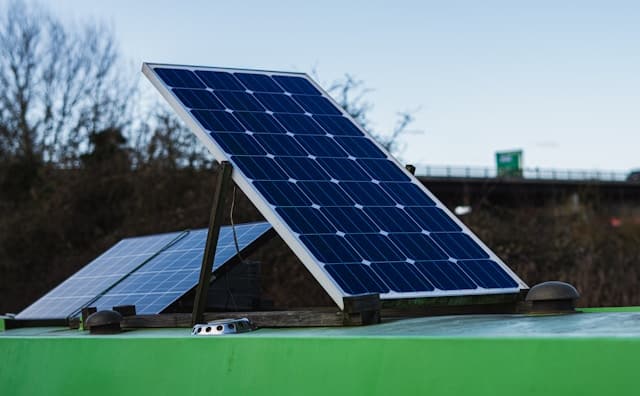What Are the Key Considerations for Building Near High-Tension Power Lines?

Building near high-tension power lines is no small undertaking. High-voltage transmission lines, which are often visible from many miles away, represent a significant feature of the landscape and carry with them a range of considerations for property owners and builders. If you’re contemplating buying a house in such an area or planning to construct one, it’s important to understand the various factors that come into play. These include, but are not limited to, health and safety risks, property value, and the technical aspects of working near power lines.
Understanding High-Tension Power Lines
Before delving deeper into the specific issues associated with building near power lines, it’s crucial to understand what high-tension power lines are. High-tension lines are a type of overhead power line that transports electricity across long distances. They are characterized by high voltage or tension, often in the range of tens of thousands of volts. Carrying electricity at such high voltages allows them to transmit power more efficiently over long distances.
A lire également : How to Optimize Real Estate Portfolios in the Face of Climate Change?
The transmission equipment required for these lines, such as substations and transformers, can also occupy a significant footprint, and their presence can influence the aesthetics and usability of the surrounding property. Furthermore, underground power lines, while less visible, can present their own challenges for construction and landscaping.
Health and Safety Risks of Living Near Power Lines
There is a long-standing debate around the potential health risks associated with living near power lines. While the consensus among scientists is that the low frequency magnetic fields produced by power lines are not harmful, some studies suggest a potential link between long-term exposure and certain health conditions, such as childhood leukemia.
Sujet a lire : What Is the Role of Virtual Reality in Training Real Estate Agents?
Therefore, if you’re thinking about building your house near high-tension power lines, health considerations might be a factor. It’s also worth noting that safety guidelines recommend maintaining a safe distance from transmission lines at all times. Contact with high-voltage lines, either directly or through a conductive object, can result in severe injury or even death. Therefore, construction activities near power lines must be conducted with utmost caution, using appropriate safety equipment and procedures.
Property Value Considerations
The proximity of a property to high-tension power lines can impact its value. Many potential buyers may be deterred by the visual impact of power lines, their perceived health risks, or the noise they can generate. Therefore, it’s essential to consider the potential impact on property value before purchasing land or developing a property near power lines.
On the other hand, properties in these areas might be more affordable due to these factors, which could be appealing if you’re willing to accept the associated risks and challenges. Hence, a cost-benefit analysis is crucial before making such a decision.
Technical Challenges of Building Near Power Lines
Working near high-voltage transmission lines can present a range of technical challenges. Construction equipment, such as cranes or diggers, can inadvertently come into contact with overhead lines or underground cables, leading to dangerous situations. Therefore, careful planning and risk assessment are needed to ensure the safety of construction workers and the integrity of the power infrastructure.
Furthermore, restrictions and regulations often apply to construction near power lines. These can include minimum safety distances and limitations on building height or the use of certain types of machinery. Complying with these requirements might impose additional costs or constraints on your construction project.
Underground Power Lines: A Safer Alternative?
One potential solution to some of the problems associated with building near high-tension power lines is the use of underground power lines. While these are typically more expensive to install and maintain, they eliminate many of the visual and safety issues associated with overhead lines.
However, underground lines can still present challenges for construction. For example, they can be damaged during excavation works, leading to power outages and costly repairs. Nonetheless, by carefully mapping out the location of underground lines and following safe digging practices, these risks can be managed.
In conclusion, building near high-tension power lines involves a complex set of considerations, from health and safety risks to property values and technical challenges. By understanding these factors, you can make a more informed decision about whether such a property is the right choice for you.
Navigating Regulatory Restrictions when Building Near High-Tension Power Lines
Planning your construction project near high-tension power lines comes with its own set of challenges, including the need to comply with regulatory restrictions imposed to ensure power safety. Zoning laws and regulatory bodies like the Federal Energy Regulatory Commission (FERC) in the U.S. have specific guidelines for construction near transmission lines.
The most common restriction is the safe distance that must be maintained between the high voltage lines and any structure. This distance varies depending on the voltage of the lines and can range from a few meters to several tens of meters. This regulation is imposed to prevent any accidental contact, which could lead to catastrophic outcomes.
Additionally, there might be restrictions regarding the height of the building. If your property is directly under or very close to the power lines, the building height cannot exceed a certain limit to avoid any risk of contact with the lines.
Other restrictions might include limitations on the use of specific types of machinery. For instance, cranes, which are often used in construction, can inadvertently come into contact with the lines if not properly managed.
Complying with these regulations might add to the cost of the construction project. However, it is essential to adhere to these guidelines as they are designed to ensure the safety of the construction workers and the integrity of the power infrastructure.
Pros and Cons of Living Near High-Tension Power Lines
Living near high-tension power lines comes with its own set of pros and cons. On the upside, properties near power lines tend to be more affordable due to the perceived risks and challenges. This could be a significant advantage for those willing to accept these risks.
On the downside, the presence of overhead lines could affect the aesthetic appeal of the property. Some people find the sight of power lines disruptive, and the noise they generate, especially during rainy weather, can be disturbing.
There might also be potential health risks associated with long-term exposure to the low-frequency magnetic fields produced by these lines. Though the scientific consensus does not confirm these risks, the perception of potential harm could still affect your peace of mind and the future resale value of the property.
Moreover, the technical challenges of building and maintaining a house near high-voltage transmission lines, such as the need to maintain a safe distance and comply with regulations, could add to the overall cost and effort of owning such a property.
Conclusion: Is a House Near Power Lines Right for You?
Deciding to buy a house near high-tension power lines is not a decision to be taken lightly. There are multiple factors to consider, from potential health and safety risks to property value considerations and technical challenges.
While the cost of properties near power lines might be appealing, the long-term costs, both financial and non-financial, need to be taken into account. However, with careful planning and adherence to safety guidelines and regulations, it is possible to live safely and comfortably near high-tension power lines.
Before making a decision, it is advisable to carry out a locate request to understand the exact location of both overhead and underground lines. This will help you assess the potential challenges and risks and make an informed decision.
Remember, the choice to live near power lines is subjective and depends on your personal preferences and risk tolerance. By understanding the pros and cons, you can make a decision that is right for you.
